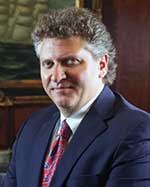Speaker Spotlight: Beyond zero injuries

EDITOR’S NOTE: Every year, the National Safety Council Congress & Expo features some of the top thought-leaders and motivators in the occupational safety and health community. Safety+Health has invited the most highly rated presenters to contribute to this monthly column. For more on this year’s event, visit congress.nsc.org.
For years, safety leaders have been challenged with hitting the goal of zero injuries. Millions of dollars are spent in search of zero, the “holy grail” of safety.
Many of these efforts have proved beneficial – while others must be questioned.
Some of the finest safety cultures attain the goal of zero injuries only to find that a tragic event shatters zero, leaving it a hollow memory of what was, but no longer is.
Why does this happen?
Is zero the right goal, or is there a better one that will drive continuous safety improvement?
A ‘deer in headlights’ moment
At a conference some years ago, in the middle of my session, a guy stood up and said, “Excuse me Bill, but I’m Bob, global thought leader of a major safety consulting firm. For more than 50 years we have told the world that zero injuries is the goal. Who are you to suggest a different path?”
Hmmm … that was awkward – in front of a whole room of folks. For a moment, I was a deer in the headlights. When you disagree with a global thought leader, you must do your homework.
I had exactly a half second for that homework.
“Bob, I appreciate that your goal of zero injuries was relevant for the past 50 years, but I’m convinced that now that goal is doing us more harm than good.”
I could see Bob stop, wheels turning, a little unsure. So now, as Bob became the deer in my headlights, I continued the conversation.
“Bob, the BP Horizon rig ran for seven years with zero injuries and handed out safety awards one morning. That night, 11 men would die and CNN would report 390 maintenance items were neglected for repair on that rig. So how well did zero injuries work for BP?”
“With all due respect, Bob,” I said, “your model is outdated and no longer valid.”
I am reminded of the time I heard a senior ops leader say, “If people would just follow the rules we create, nobody would ever get hurt.”
That is wrong on so many levels. And yet, many leaders actually believe this stuff – that’s the scary part. They fail to see the underlying “management system at risk” behaviors that kill more people than worker behavior ever will.
The proof is in the pudding, as my mom always said.
So where do we go from here?
We need to say goodbye to our sacred cows and move to a new paradigm. We need to focus beyond zero injuries. Zero injuries should not be your goal.
With this article, I challenge you and your leadership team to strive for a new goal, one far beyond zero injuries: zero at-risk behaviors (from the management system and the workers in an interdependent culture where safety is never second to profits). Until leaders understand that there is a level of safety beyond zero, they will be stuck on the dreaded “hockey stick plateau” in their safety performance.
Change the mindset
So, how can you put some of these ideas to work to help your organization save lives?
Here’s a fast, easy method that is time-tested: First, purchase giant sticky notes. Every six months, at every safety meeting, hand out five sticky notes to every employee and say, “What’s the next serious injury we will have? Where will it occur? What time of day?”
Have the employees put their notes on a wall grouped in clusters by where and when the injury will occur. Find the biggest clusters of sticky notes – that’s probably where your next serious injury will occur. And you will only find it when you learn to look beyond zero injuries.
This article represents the views of the author and should not be construed as a National Safety Council endorsement.
 Bill Sims Jr. is president of The Bill Sims Co. Inc. He is a world-renowned keynote speaker. His book, “Green Beans & Ice Cream: The Remarkable Power of Positive Reinforcement,” has garnered rave reviews. Sims has built more than 1,000 positive reinforcement systems at firms, including DuPont, Siemens VDO, Coca-Cola and Disney. Visit beyondzeroinjuries.com for more information.
Bill Sims Jr. is president of The Bill Sims Co. Inc. He is a world-renowned keynote speaker. His book, “Green Beans & Ice Cream: The Remarkable Power of Positive Reinforcement,” has garnered rave reviews. Sims has built more than 1,000 positive reinforcement systems at firms, including DuPont, Siemens VDO, Coca-Cola and Disney. Visit beyondzeroinjuries.com for more information.
Direct to your inbox: Sign up to be notified in email about new “Speaker Spotlight” columns.
Post a comment to this article
Safety+Health welcomes comments that promote respectful dialogue. Please stay on topic. Comments that contain personal attacks, profanity or abusive language – or those aggressively promoting products or services – will be removed. We reserve the right to determine which comments violate our comment policy. (Anonymous comments are welcome; merely skip the “name” field in the comment box. An email address is required but will not be included with your comment.)

